#early modern European art
Text
For #GuineaPigAppreciationDay, the two earliest examples I've found of guinea pigs in the European visual record:
1. Painting attributed to Giovanni da Udine, n.d., artist active early 1500s to death in 1564
2. Drawing from the Felix Platter album, collected sometime between 1546-54
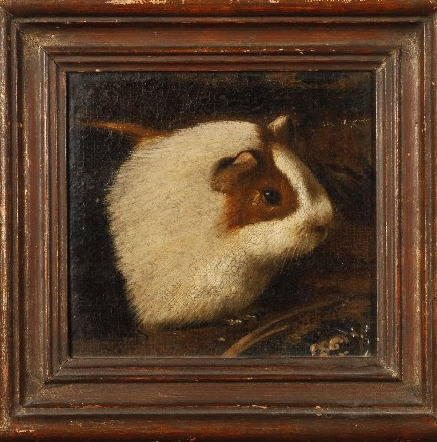
Attributed to Giovanni da Udine (Italian, 1487–1564)
Head of a Guinea Pig
oil on canvas laid on panel
6.5 x 7 in. (16.5 x 17.8 cm.)
From Duke's Fine Art Auction catalog, 11th April 2013, Lot 215

Drawing collected by Felix Platter, to be used in Gessner's Historiae animalium. The drawings were made by several artists, mostly anonymous, and were collected between 1546 and 1558 (this one must date to no later than 1554 as it served as a reference for Gessner's woodcut published that year). Bijzondere collectie Universiteit van Amsterdam collection.
#Guinea Pig Appreciation Day#guinea pig#cavy#cavies#European art#early modern European art#painting#oil painting#watercolor#illustration#historical sciart#scientific illustration#zoological illustration#natural history art#Felix Platter#Conrad Gessner#Historia animalium#16th century art#animal holiday#animals in art#Bijzondere collectie Universiteit van Amsterdam#auction#private collection
1K notes
·
View notes
Text
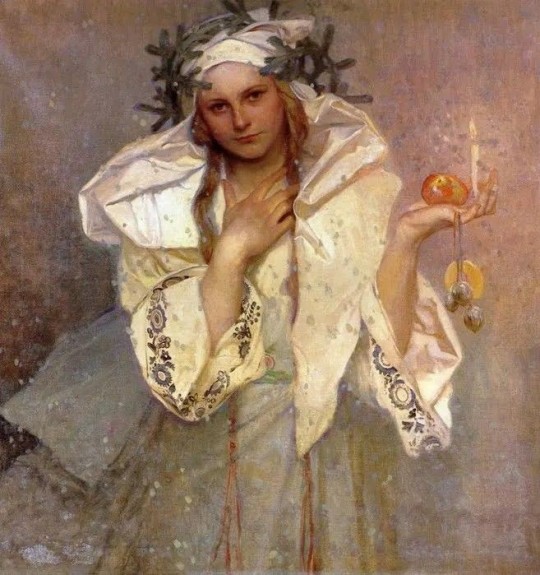
Alphonse Mucha (Czech, 1860-1939) • Christmas in America • 1919
#art#painting#fine art#art history#alphonse mucha#czech artist#women in paintings#early 20th century european art#christmas theme#artist#painter#art nouveau#modern art nouveau#art blog#pagan sphinx art blog#art enthusiasts
283 notes
·
View notes
Photo
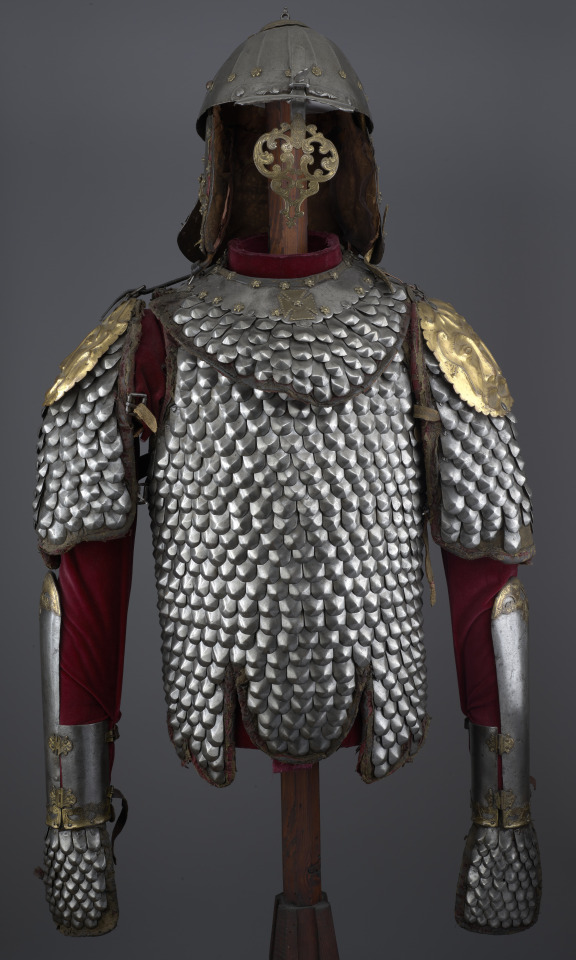
A Hussar’s scale armor, known as a Karacena, Poland, ca. 1645-1683, housed at the Czartoryski Museum, Krakow.
#armor#armour#scale armor#karacena#europe#european#poland#polish#early modern#czartoryski museum#art#history
982 notes
·
View notes
Text

Henri Matisse (French, 1869-1954) • The Pink Studio • 1911
#art#fine art#painting#henri matisse#expressionism#expressionist#french artist#fauvist#the painted room blog#paintings of art studios#artwork#artist#paintings of interiors#early 20th century european art#modernism#art enthusiast#art appreciation
164 notes
·
View notes
Text

Léon Pierre Félix (French,1869-1940) • Mélancolie • 1910
#art#painting#fine art#art history#léon pierre félix#french artist#early 20th century european art#impressionism#modern art#portrait#female portrait#unidentified portrait#oil painting#artwork#la robe blanche art blog#women in white#the white dress#art blogs on tumblr#women in hats
32 notes
·
View notes
Text
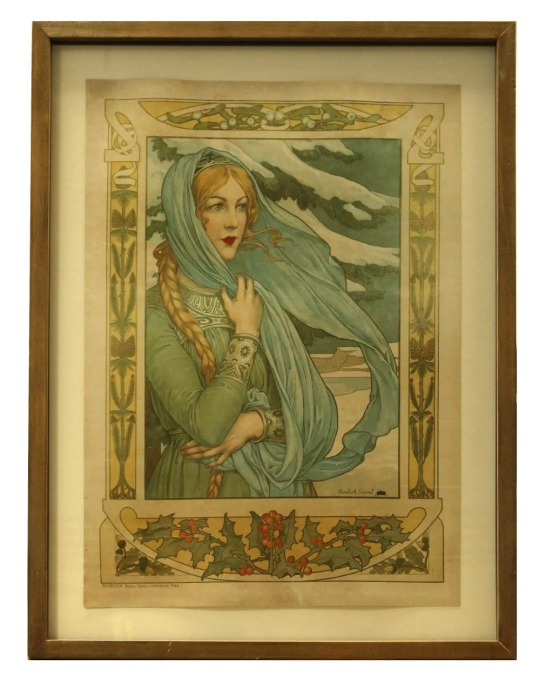
Élisabeth Sonrel • Winter • 1901 • Color lithograph • Private collection
#illustration#art#illustrator#artwork#élisabeth sonrel#woman artist#french artist#art nouveau modern#color lithograph#art & beauty#illustration blog#sassafras and moonshine blog#early 20th century european art#works on paper
31 notes
·
View notes
Text
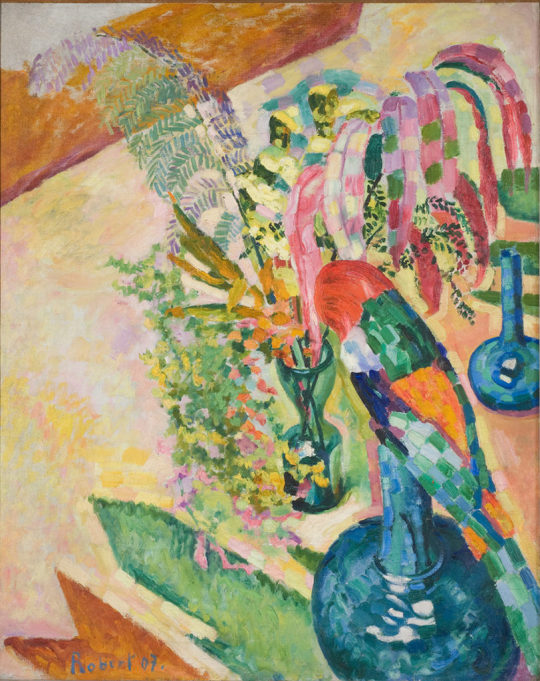
Robert Delaunay (French,1885-1941) • Nature morte au perroquet (Still Life with Parrot) • 1907 • Thyssen-Bornemisza Museum, Madrid
#still life#art#painting#fine art#art history#robert delaunay#french artist#neo impressionism#painter#early 20th century european art#1900s artwork#european modernism#modern art#bold color in art#pagan sphinx art blog#art blogs on tumblr#art lovers on tumblr
24 notes
·
View notes
Text

Two Wrestlers by Maarten van Heemskerck and Dirck Volckertszoon Coornhert
Dutch, 1552
rayeshistory.com
0 notes
Text
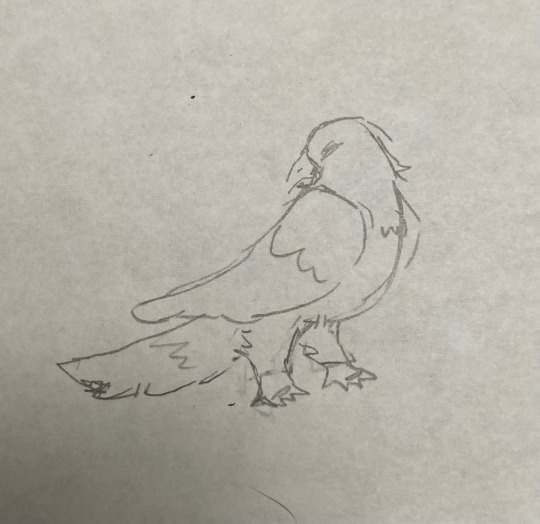
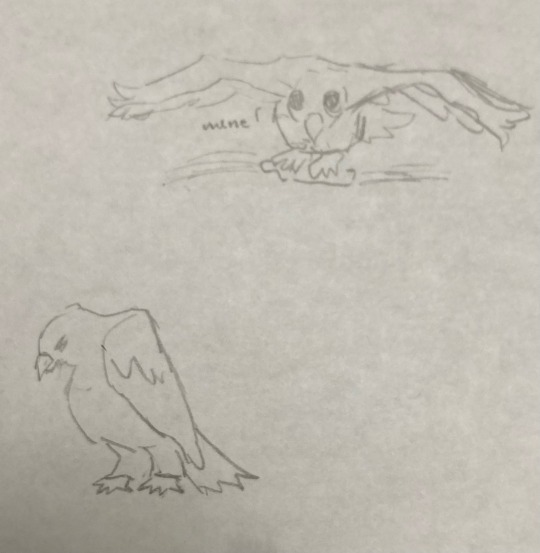




🧍heyyy
i did little sketches while working on my final project for a 7 week class,, it was abt falconry,, sillay creatures
#art#the class was “games and play in medieval and early modern european and world history#it was fun but good lord i hate 7 week classes#so much work packed into such a short time span#i look like a stupid cat image i stg#the one that’s squinting and has a red bg#anyways hehe bordy <33#i like red-tailes and harris hawks#they’re neat
1 note
·
View note
Text
Cross-posting an essay I wrote for my Patreon since the post is free and open to the public.

Hello everyone! I hope you're relaxing as best you can this holiday season. I recently went to see Miyazaki's latest Ghibli movie, The Boy and the Heron, and I had some thoughts about it. If you're into art historical allusions and gently cranky opinions, please enjoy. I've attached a downloadable PDF in the Patreon post if you'd prefer to read it that way. Apologies for the formatting of the endnotes! Patreon's text posting does not allow for superscripts, which means all my notations are in awkward parentheses. Please note that this writing contains some mild spoilers for The Boy and the Heron.

Hayao Miyazaki’s 2023 feature animated film The Boy and the Heron reads as an extended meditation on grief and legacy. The Master of a grand tower seeks a descendant to carry on his maddening duty, balancing toy blocks of magical stone upon which the entire fabric of his little pocket of reality rests. The world’s foundations are frail and fleeting, and can pass away into the cold void of space should he neglect to maintain this task. The Master’s desire to pass the torch undergirds much of the film’s narrative.

(Isle of the Dead. Arnold Böcklin. 1880. Oil on Canvas. Kunstmuseum. Basel, Switzerland.)
Arnold Böcklin, a Swiss Symbolist(1) painter, was born on October 16 in 1827, the same year the Swiss Evangelical Reformed Church bought a plot of land in Florence from the Grand Duke of Tuscany, Leopold II, that had long been used for the burials of Protestants around Florence. It is colloquially known as The English Cemetery, so called because it was the resting place of many Anglophones and Protestants around Tuscany, and Böcklin frequented this cemetery—his workshop was adjacent and his infant daughter Maria was buried there. In 1880, he drew inspiration from the cemetery, a lone plot of Protestant land among a sea of Catholic graveyards, and began to paint what would be the first of six images entitled Isle of the Dead. An oil on canvas piece, it depicts a moody little island mausoleum crowned with a gently swaying grove of cypresses, a type of tree common in European cemeteries and some of which are referred to as arborvitae. A figure on a boat, presumably Charon, ferries a soul toward the island and away from the viewer.
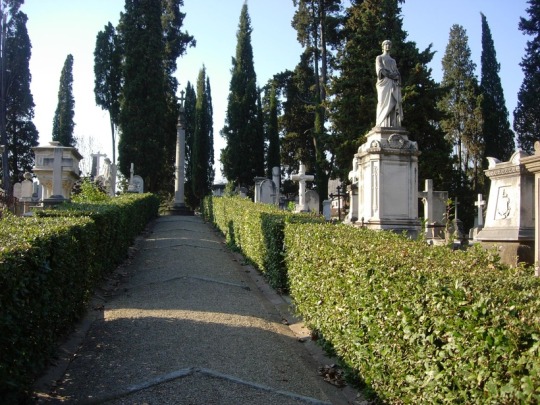
(Photo of The English Cemetery in Florence. Samuli Lintula. 2006.)
The Isle of the Dead paintings varied slightly from version to version, with figures and names added and removed to suit the needs of the time or the commissioner. The painting was glowingly referenced and remained fairly popular throughout the late 19th and early 20th centuries. The painting used to be inescapable in much of European popular culture. Professor Okulicz-Kozaryn, a philologist (someone with a deep interest in the ways language and cultural canons evolve)(2) observed that the painting, like many other works in its time, was itself iterative and became widely reiterated and referenced among its contemporaries. It became something like Romantic kitsch in the eyes of modern art critics, overwrought and excessively Byronic. I imagine Miyazaki might also resent a work of that level of manufactured ubiquity, as Miyazaki famously held Disney animated films in contempt (3). Miyazaki’s films are popularly aspirational to young animators and cartoonists, but gestures at imitation typically fall well short, often reducing Miyazaki’s weighty films to kitschy images of saccharine vibes and a lazy indulgence in a sort of empty magical domestic coziness. Being trapped in a realm of rote sentiment by an uncritical, unthoughtful viewership is its own Isle of Death.

(Still from The Boy and the Heron, 2023. Studio Ghibli.)
The Boy and the Heron follows a familiar narrative arc to many of Miyazaki’s other films: a child must journey through a magical and quietly menacing world in order to rescue their loved ones. This arc is an echo of Satsuki’s journey to find Mei in My Neighbor Totoro (1988) and Chihiro’s journey to rescue her parents Spirited Away (2001). To better understand Miyazaki’s fixation with this particular character journey, it can be instructive to watch Lev Atamanov’s 1957 animated film, The Snow Queen (4)(5), a beautifully realized take on Hans Christian Andersen’s 1844 children’s story (6)(7). Mahito’s journey continues in this tradition, as the boy travels into a painted world to rescue his new stepmother from a mysterious tower.
Throughout the film, Miyazaki visually references Isle of the Dead. Transported to a surreal world, Mahito initially awakens on a little green island with a gated mausoleum crowned with cypress trees. He is accosted by hungry pelicans before being rescued by a fisherwoman named Kiriko. After a day of catching and gutting fish, Mahito wakes up under the fisherwoman’s dining table, surrounded by kokeshi—little wooden dolls—in the shapes of the old women who run Mahito’s family’s rural household. Mahito is told they must not be touched, as the kokeshi are wards set up for his protection. There is a popular urban legend associated with the kokeshi wherein they act as stand-ins for victims of infanticide, though there seems to be very little available writing to support this legend. Still, it’s a neat little trick that Miyazaki pulls, placing a stray reference to a local legend of unverifiable provenance that persists in the popular imagination, like the effect of fairy stories passed on through oral retellings, continually remolded each new iteration.
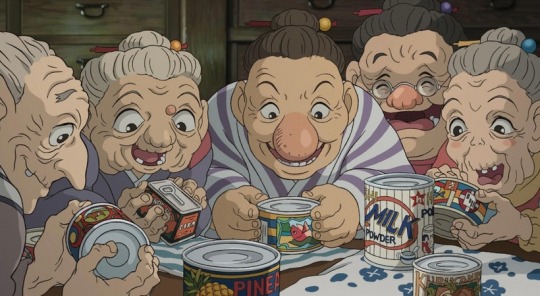
(Still from The Boy and the Heron, 2023. Studio Ghibli.)
Kiriko’s job in this strange landscape is to catch fish to nourish unborn spirits, the adorable floating warawara, before they can attempt to ascend on a journey into the world of the living. Their journey is thwarted by flocks of supernatural pelicans, who swarm the warawara and devour them. This seems to nod to the association of pelicans with death in mythologies around the world, especially in relationship to children (8). Miyazaki’s pelicans contemplate the passing of their generations as each successive generation seems to regress, their capacity to fulfill their roles steadily diminishing.
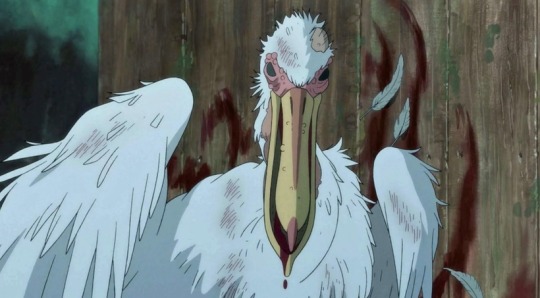
(Still from The Boy and the Heron, 2023. Studio Ghibli.)
As Mahito’s adventure continues, we find the landscapes changing away from Böcklin’s Isle of the Dead into more familiar Ghibli territories as we start to see spaces inspired by one of Studio Ghibli’s aesthetic mainstays, Naohisa Inoue and his explorations of the fantasy realms of Iblard. He might be most familiar to Ghibli enthusiasts as the background artists for the more fantastical elements of Whisper of the Heart (1995).

(Naohisa Inoue, for Iblard Jikan, 2007. Studio Ghibli.)
By the time we arrive at the climax of The Boy and the Heron, the fantasy island environment starts to resemble English takes on Italian gardens, the likes of which captivated illustrators and commercial artists of the early 20th century such as Maxfield Parrish. This appears to be a return to one of Böcklin’s later paintings, The Island of Life (1888), a somewhat tongue-in-cheek reaction to the overwhelming presence of Isle of the Dead in his life and career. The Island of Life depicts a little spot of land amid an ocean very like the one on which Isle of the Dead’s somber mausoleum is depicted, except this time the figures are lively and engaged with each other, the vegetation lush and colorful, replete with pink flowers and palm fronds.

(Island of Life. Arnold Böcklin. Oil on canvas. 1888. Kunstmuseum. Basel, Switzerland.)
In 2022, Russia’s State Hermitage Museum in Saint Petersburg acquired the sixth and final Isle of the Dead painting. In the last year of his life, Arnold Böcklin would paint this image in collaboration with his son Carlo Böcklin, himself an artist and an architect. Arnold Böcklin spent three years painting the same image three times over at the site of his infant daughter’s grave, trapped on the Isle of the Dead. By the time of his death in 1901 at age 74, Böcklin would be survived by only five of his fourteen children. That the final Isle of the Dead painting would be a collaboration between father and son seemed a little ironic considering Hayao Miyazaki’s reticence in passing on his own legacy. Like the old Master in The Boy and the Heron, Miyazaki finds himself with no true successors.
The Master of the Tower's beautiful islands of painted glass fade into nothing as Mahito, his only worthy descendant, departs to live his own life, fulfilling the thesis of Genzaburo Yoshino’s 1937 book How Do You Live?, published three years after Carlo Böcklin’s death. In evoking Yoshino and Böcklin’s works, Hayao Miyazaki’s The Boy and the Heron suggests that, like his character the Master, Miyazaki himself must make peace with the notion that he has no heirs to his legacy, and that those whom he wished to follow in his footsteps might be best served by finding their own paths.
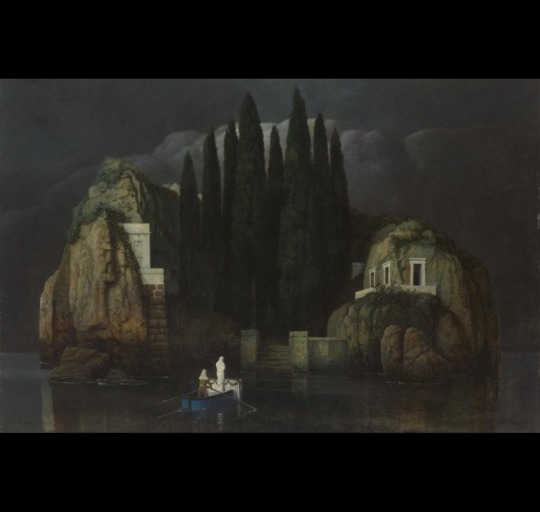
(Isle of the Dead. Arnold and Carlo Böcklin. Oil on canvas. 1901. The State Hermitage Museum. Saint Petersburg, Russia.)
INFORMAL ENDNOTES
1 - Symbolists are sort of tough to nail down. They were started as a literary movement to 1 distinguish themselves from the Decadents, but their manifesto was so vague that critics and academics fight about it to this day. The long and the short of it is that the Symbolists made generous use of a lot of metaphorical imagery in their work. They borrow a lot of icons from antiquity, echo the moody aesthetics from the Romantics, maintained an emphasis on figurative imagery more so than the Surrealists, and were only slightly more technically married to the trappings of traditionalist academic painters than Modernists and Impressionists. They're extremely vibes-forward.
2 - Okulicz-Kozaryn, Radosław. Predilection of Modernism for Variations. Ciulionis' Serenity among Different Developments of the Theme of Toteninsel. ACTA Academiae Artium Vilnensis 59. 2010. The article is incredibly cranky and very funny to read in parts. Contains a lot of observations I found to be helpful in placing Isle of the Dead within its context.
3 - "From my perspective, even if they are lightweight in nature, the more popular and common films still must be filled with a purity of emotion. There are few barriers to entry into these films-they will invite anyone in but the barriers to exit must be high and purifying. Films must also not be produced out of idle nervousness or boredom, or be used to recognise, emphasise, or amplify vulgarity. And in that context, I must say that I hate Disney's works. The barrier to both the entry and exit of Disney films is too low and too wide. To me, they show nothing but contempt for the audience." from Miyazaki's own writing in his collection of essays, Starting Point, published in 2014 from VIZ Media.
4 - You can watch the movie here in its original Russian with English closed captions here.
5 If you want to learn more about the making of Atamanoy's The Snow Queen, Animation Obsessive wrote a neat little article about it. It's a good overview, though I have to gently disagree with some of its conclusions about the irony of Miyazaki hating Disney and loving Snow Queen, which draws inspiration from Bambi. Feature film animation as we know it hadonly been around a few decades by 1957, and I find it specious, particularly as a comic artistand author, to see someone conflating an entire form with the character of its content, especially in the relative infancy of the form. But that's just one hot take. The rest of the essay is lovely.
6 - Miyazaki loves this movie. He blurbed it in a Japanese re-release of it in 2007.
7 - Julia Alekseyeva interprets Princess Mononoke as an iteration of Atamanov's The Snow Queen, arguing that San, the wolf princess, is Miyazaki's homage to Atamanoy's little robber girl character.
8 - Hart, George. The Routledge Dictionary of Egyptian Gods And Goddesses. Routledge Dictionaries. Abingdon, United Kingdom: Routledge. 2005.
#hayao miyazaki#the boy and the heron#how do you live#arnold böcklin#carlo böcklin#symbolists#symbolism#animation#the snow queen#lev atamanov#naohisa inoue#the endnotes are very very informal aksjlsksakjd#sorry to actual essayists
505 notes
·
View notes
Text
just a very quick explanation about eastern european melancholy because it seems important to me -- this term as well as the general concept of melancholy can often be found in art and literature analysis and basically describes how the general depiction of eastern europe is... less than favourable. for example, eastern european characters like in bram stoker's dracula are characterised as being distincly different and not as culturally advanced compared to "modern" western cultures, a trend that is sometimes still seen today when looking at cultural stereotypes.
in the context of the movie damon and kris watched as well as historically, this term now more often refers to a general feeling of hopelessness that is caused by unstable political as well as economic conditions due to the situation post wwii and then the dissolution of the soviet union as well as yugoslavia.
the fact that damon and kris both felt that it was important to illustrate this cultural aspect not just through art but by choosing to evoke a female figure, a slavic babushka, means a lot to me, personally. i was joking with @izpira-se-zlato that damon made kris look like my grandma -- but, as with a lot of people here i assume, my grandma was born in post-war eastern europe and was a young girl during the same time period this movie takes place in and was also forced to experience and live through a lot of hardships in early communist poland.
i do believe that kris feels a strong connection to his slavic heritage and culture (he was the one rambling about interslavic, after all) and the fact that damon felt something, too, while watching the movie and that they wanted to express it together is something that feels very, very important to me and i honestly love and appreciate them so much for doing that.
#joker out#i enjoyed the memes but i was also having a breakdown because this is so very important to me#sometimes i realise i have a degree that is indeed also focused on culture and not just literature can you believe#i guess the meaning is also very very apparent for a lot of slavic people here because well#we all live(d) through it#there's a reason why my parents emigrated#anyway#kris guštin#damon baker
138 notes
·
View notes
Text
Favorite Historical Architectural Styles
Since I've done my favorite historical fashions, I thought it would be fun to do historical architectural styles too. I want to write more about architecture too, but I've started thinking should I do a separate blog for architecture and architectural history or should I just do it all here? I think it would be better in a way that I wouldn't have to worry if anything I want to write is too far from the actual topic of the blog, but then again, there is a lot of overlap, especially when it comes to Arts and Crafts movement (which I'm currently writing my thesis about and which I definitely will talk a lot about), and also I would have to manage yet another blog.
Anyway, I'll again do this from oldest to newest. I will limit myself to western styles (except when we get to Modernism all styles are very international), even though there's a lot of non-western styles I enjoy, but it's what I know most about.
Perpendicular Gothic


I love Gothic architecture in general and the several first entries will be my favorite sub-styles of it. I love the the way Gothic Cathedrals try and so often succeed to feel like forests. I love how the structural elements are used to create the aesthetic. I love the organic visual elements. I love that it's such a unique style in Western architecture. And I love the amazing craftsmanship that went into it.
I'm particularly a fan of English Gothic because of it's insanely beautiful and complex ribbed vaults. From English Gothic my favorite though is the Perpendicular style, which was basically the English late Gothic. It's characteristics can be seen in the second pic. It has the stretched arch and the very flowing and organic traceries. I do include here the rest of English Gothic too, since even though the Perpendicular style is my favorite of them, all if it is still one of my Gothic favorites.
German Late Gothic

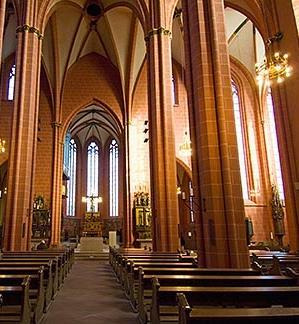
As it's becoming clear I love Late Gothic architecture in general the most, and in the geographical axis I also love German Gothic. Early and High Gothic were mainly divided into French and English styles and the French style dominated in the continent, just being altered a little to the local building traditions outside of France, but during late Gothic it diverged much more strongly into different styles.
German Gothic also has beautiful complex faulting (though less insane than English) and it also has that same pursuit of massive height French Gothic has. Those combined with that Late Gothic's more streamlined flowing and organic aesthetic, some of the German Late Gothic cathedrals really sell that feeling of standing in a forest.
Finnish "Gothic"

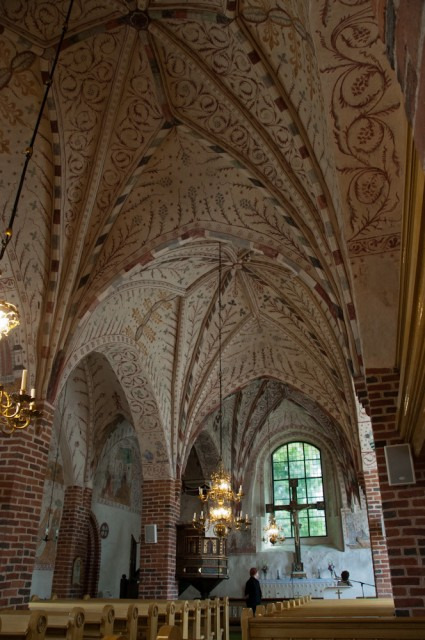
I have a soft spot for the Finnish Medieval stone churches, which are not nearly as sophisticated or detailed as the other European counterparts, but still made with beautiful craftsmanship and they have some cool own features. It's very far from the European Gothic traditions, as you can see, but that's still the influence, hence Gothic in scare quotes. I love the simple outward appearance with the exposed thick stone walls, the details of the gable that worked as the calling card for the building master and the very steep roof. Like everywhere at the time, the roof in these has wooden structure, which is frankly super cool. It was not a simple engineering problem to make a roof that steep and massive at the time, but the structure works so well there's 600 year old roofs with the original logs still working perfectly well. I also really love the original medieval murals in them, which were painted over during the Reformation (you can't have color in a Lutheran church damn it), but thankfully some of them have been restored from under the paint.
Finnish "Renaissance" Log Churches


Renaissance also didn't land in Finland similarly as it did rest of the Europe. When Renaissance was going on in Europe, they still were building those "Gothic" churches here. These log churches were based on Scandinavian version of the Renaissance church, but they didn't really look like Renaissance churches, and were kinda it's own thing continuing a lot of the aesthetics from those Gothic churches. This is a highly specific style, but I just think they are so cool and pretty? Like they really made a CUPOLA out of log.
Arts and Crafts Movement


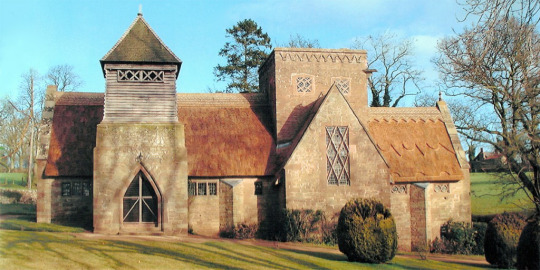
Arts and Crafts Movement didn't have exactly a style, rather a design philosophy that was more important than specific style. There's of course a lot of stylistic similarities in the works of the different members of the Movement, because they had overlapping sources of inspiration and were influenced by each other, so we can think of it as a style. I could, have and will talk about them for hours, but briefly now: It was a moment in latter half of the 19th century and early 20th century and their goals were reviving craftsmanship skills and professions, socialism, opposing industrialism and abolishing the hierarchy between fine arts and applied arts. They were very much influenced by Medievalism and Gothic art and architecture, though unlike Gothic Revivalist, they took more from the guiding principles than the aesthetics. They basically started Modernism and lay ground to all the Modernist architecture's main principles, like form follows function.
Art Nouveau


Art Nouveau was directly influenced by the Arts and Crafts Movement and was the first mainstream Modernist style. I especially love the more toned down Finnish Art Nouveau, or Jugend as it's called here, but I do love the style more broadly too. I'm not that into those almost Baroque style versions of it though, with barely any straight lines. I love the round doors, the stylized floral patterns and the use of light.
Organic architecture
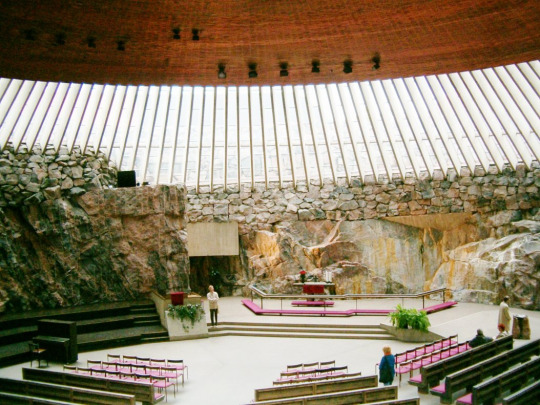


This has to be my favorite modernist/post-modernist (?) style. It's direct successor of Arts and Crafts movement and it's also more of a design principle than a unified style. There is some stylistic similarities, but it is stylistically very diverse philosophy. It was most prominent during the 20th century, but it always stayed in the sidelines, though there are still architects who might be considered practicing organic architecture. Organic architecture is all about living in harmony with nature, taking inspiration from it, designing the building to fit the building spot and the surroundings, extra care taken in to preserve the nature already there, and using local natural materials when possible. My favorite architects are Raili and Reima Pietilä, who were most prominent organic architects in Finland. (I almost moved into apartment designed by them, but it was in pretty bad condition, so it wouldn't have unfortunately been worth the price.)
Brutalism


I know it's not for everyone and it's not easy to make it work but when it works, it really does. It was born in 1950s during the reconstruction era. Brutalism is not just concrete though. The point is to show the raw materials and the structural elements. Technically a lot of Gothic and Arts and Crafts architecture is then brutalist. Timber frame architecture? Also brutalist. I'm only half joking, of course the style itself is also very bare and, well, brutal, but I love it for the same reasons. I really love bare textures of materials and exposing the materials of the structural elements. And I do actually really like the texture of concrete. Though I will say concrete is destroying our world and we should use it as little as possible. But we should also protect old buildings and keep using them rather than built new ones, so I feel fine admiring the old brutalist buildings. The best brutalist buildings combine materials very intentionally and make works of art with the light.
Bonus - Favorite contemporary architecture: Traditional methods



As we're living in the post-modern times, there's not really unified and specifiable styles or architectural ideologies anymore. They all kinda flow into each other and architects don't organize themselves into clear groups based on style and design philosophy. So it's hard to put into words the style I like in contemporary architecture. There's been growing interest in studying traditional structures and methods, learn from their sustainability and incorporate them into contemporary architecture. They are techniques that have been developed through trial and error on the span of centuries, so we really don't have to reinvent the wheel here. Traditional methods of a given area have also been developed for that area and it's climate, from the materials available there, so they also push us to use local materials. Typically these traditional structures are very simple, often made from solid material, which makes them easier to built without construction error (a huge problem in modern structures), and easier to fix and maintain, when inevitably there is issues. Also they are beautiful, definitely more so that steel and glass. I love solid brick structures, log structures, timber frames, natural stone, rammed earth and all of them, especially when these beautiful materials are left bare.
#architecture#architectural history#historical architecture#history#art history#modern architecture#gothic architecture#brutalism#arts and crafts movement#art nouveau
536 notes
·
View notes
Text
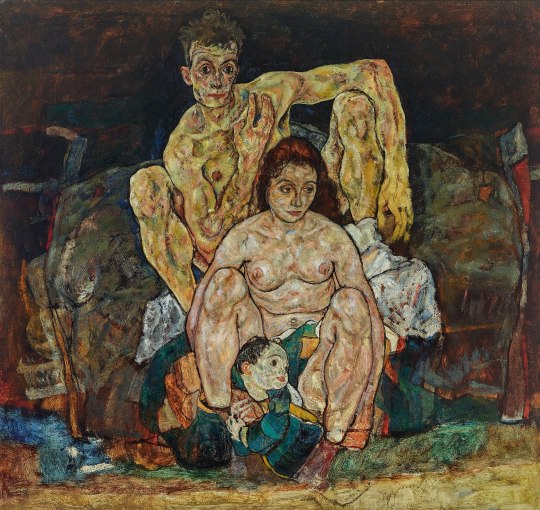
Egon Schiele (Austrian, 1890–1918) • The Family • 1918 • Belvedere Gallery, Vienna.
This painting remained unfinished. Schiele died from the Spanish flu. Sadly, his wife, Edith, who was six months pregnant, died three days before him.
#art#painting#fine art#art history#portrait#family group#oil painting#egon schiele#artist death#austrian artist#expressionism#modern art#early 20th century european art#pagan sphinx art blog#art blogs on tumblr#art lovers on tumblr#artwork
108 notes
·
View notes
Photo



A beautiful Spear decorated with copper, silver, and gold with two miniature Wheellock Pistols atatched directly to the head, France, ca. 1600, housed at the Kunsthistorischesmusuem, Vienna.
#weapons#polearms#firearms#spear#wheellock#pistol#europe#european#french#france#early modern#khm#vienna#art#history
2K notes
·
View notes
Text

Pablo Picasso (Spanish, ) • The Blue Room • 1901 • The Phillips Collection
#art#fine art#painting#art history#pablo picasso#picasso#picasso blue period#early 20th century european art#spanish artist#art nude#bathing in paintings#interior with figure#paintings of interiors#the painted room art blog#modern art#art lovers on tumblr#art blogs on tumblr
76 notes
·
View notes
Text

Sergius Pauser (Austrian, 1896-1970) • Dame en blanc (Lady in White, Miss Sokal) • 1927 • Germanisches Nationalmuseum, Nürnberg, Germany
#art#painting#fine art#art history#sergius pauser#austrian artist#early 20th century european art#portrait#portraitist#La robe blanche#oil painting#new objectivity#weimar republi#female portrait#european modernism#pagan sphinx art blog#women in white#the white dress
41 notes
·
View notes